Black grease stains under the car
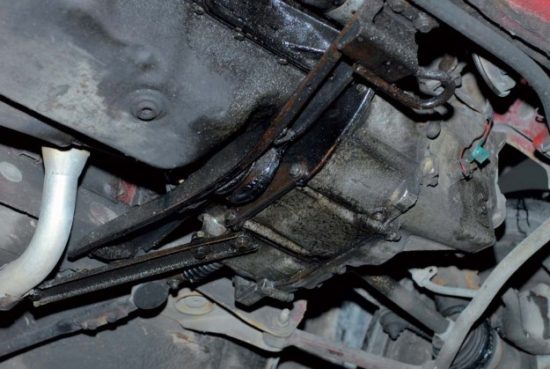
Black grease stains under the car are the first sign that you need to lift the bonnet
WHEN THE CAR BEGINS “MARKING THE TERRITORY” - Black greasy stains under the car
Dripping or leaking oil, which in most cases leaves the black, greasy trace behind our tin pet, can be a completely harmless problem, but also a real nightmare. Although it seems like a big problem, in most cases the black mark on the engine or under the engine can be solved very easily, while in some cases negligence can cause major problems and even destroy the engine.
If we look a little closer, we can notice greasy black deposits in each parking lot caused by dripping or leaking oil from parked vehicles. Dripping oil it is not a rare occurrence at all, and it happens on a large number of vehicles that have several tens of thousands of miles left behind. Knowing it's motor landing the basis for proper and long-lasting operation of the engine, therefore, it should be provided at all times with a sufficient amount of lubricant.
Lubricant in general, as well as motor oil, serves as a means located between two surfaces of kinetic pair, which move in relation to each other. The task of the lubricant is to prevent direct contact between the paired surfaces and thus to reduce friction and wear. In addition, the lubricant can cool, the lubricant can seal at the point of friction, can prevent corrosion, and can reduce bearing noise. The car engine is equipped with a pressure lubrication system, with an oil circuit. It is driven by a gear pump located in the crankcase. The engine oil passes through a filter, where impurities, metal particles and combustion residues are removed. The crankshaft and camshaft, timing mechanism, piston with rings and cylinders are lubricated. For turbocharged engines, quality lubrication of the turbocharger shaft and bearings is extremely important. Because engine oil is a fluid, and there are several places inside the engine where oil can leave a closed system, there are several seals in the engine, which due to their construction wear out over time and lose their ideal sealing function. Depending on the porosity of the individual seals, the engine may at some point lose the minimum amount of oil required for normal operation.
The first greasy tracks underneath a parked car are a sure sign that you need to head to a car repair shop. Sometimes the problem can be completely harmless, and in more frequent cases it will require some intervention and monetary investment.
Careless oil filling
The greasy marks underneath the car can be quite harmless if you find that as soon as the oil changes in the service, grease stains on the asphalt have occurred. Do not be discouraged immediately. Sometimes the reason is that a careless mechanic, without an adequate funnel from small vessels (1 or 4 liters), has poured oil into the opening on the valve cover. This principle is usually applied in less equipped workshops that do not have a common oil refill system. To the mechanic, the jet from the bucket simply went past the opening, and found its way to the tarmac over the head, block and sump of the engine. So, don't panic. This is even easy to determine by visual inspection. On older cars, on the other hand, it is simply possible that the cover of the watering hole is worn.
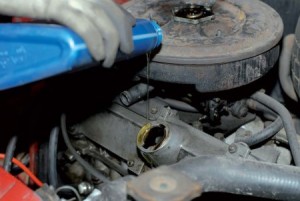
Older and simpler cars have an almost universal and aperture through which engine oil is infused. It consists of three parts - a body, a rubber seal in the form of a disk and a spring sheet, which serves to exert sufficient force to attach the lid to the opening. Such plugs are usually found on Zastava cars. The cause can be either a worn rubber band or a spring sheet that has lost its elasticity and therefore the force of pressure on the opening. Because the system is under pressure and the car is swinging enough when moving, enough oil can be lost through the faulty cover to start creating problems. It is not just about the loss of oil, but also that the oil is reaching other vital parts, which can cause additional failures. The solution is simple and can end in your own direction. There are such covers in every car parts store.
Defective oil dipstick
You certainly used to check the amount of oil in the engine by simply pulling out the dipstick to measure the oil level. It is usually in a prominent position and is often marked in yellow. Also, for older cars, it is a simple bent flat sheet that slides into a tube several millimeters in diameter. And she has a small rubber seal on her "neck" that can lose its function over time. Small amounts of oil are lost through this pipe, but they create problems in that they can clog the other parts under the bonnet and even the bottom of the sump. This intervention is also simple, so unless it is a special vehicle, the control bar can be found in medium-sized auto parts stores.
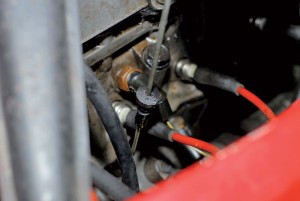
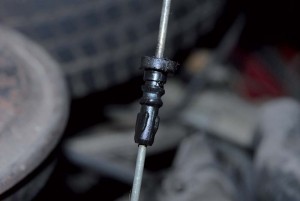
Insufficiently tightened oil filter
Also, a seemingly innocuous problem can be in an under-tightened oil filter. And this happens to careless car mechanics When replacing the oil, it is mandatory to replace the filter, and it is removed using a special tool. Setting up a new filter is a simple process and takes some force (not too much). However, it may be that the mechanic tightens the filter, whose gasket immediately starts to leak certain amounts of oil. In the worst case, the vibration may cause the filter to completely harden and fall off, which can inevitably cause larger scale damage. Failure to observe the problem in time can lead to complete destruction of the engine very quickly. Of course, the problem manifests itself first, with the appearance of greasy stains on the asphalt, so it is vital to repair the problem as soon as possible.
Insufficient tightening of the oil spill hole screw
Also, very often the oil pan can loosen the screw that is used to drain old oil when replacing it. Owing to the constant unwinding and twisting, it may very well be that the washer is consumed to such an extent that it begins to release oil. It is not uncommon for some services to change this screw after several oil changes or even every oil change. The cost of the intervention is marginal, and a complete amount of engine oil can virtually swell through a faulty screw.
When the valve cover gasket runs out
The durability of the valve cover gasket is a somewhat more complex problem and is generally not for intervention by the "master-by-master" system. It can be noticed by the accumulation of dust in the form of mud on the bonnet.
Nowadays, dripping is very difficult to see among new cars, as the engines are usually covered by a plastic cover that serves as sound insulation or as a barrier for non-skilled people to come in contact with sensitive parts of the engine. However, there is simply no reason to panic when it comes to this scenario. The valve cover gasket is the cheapest gasket used on a single engine and is made of a mixture of rubber and cork (klingerite). As it is located in an area where there is a large number of oil nozzles that lubricate the valve system and the camshafts, it is constantly in contact with the oil. However, the oil that lubricates the valve system is drawn from that part of the engine to the sump through the drainage channels, where it again passes through the filter back into the engine. Very often, because of less frequent oil changes, poor quality oils, but also filter changes during every other oil change (which is a common but engine-dangerous practice of our older mechanics), oil deposits can be caught on the PVC valve and drainage ducts, which prevent oil from draining quickly. . The PVC valve is actually a pressure regulator that rules the space of the valve system. When the oil vapor is pressurized, the PVC valve is tasked to release that space from the pressure and return the oil vapor to the oil pan or crankcase, where it is condensed due to cooling. However, the PVC valve is extremely sensitive, and practically one drip of bad oil can clog it. The increased pressure that occurs in the valve space must usually have the greatest impact on the bonnet seal.
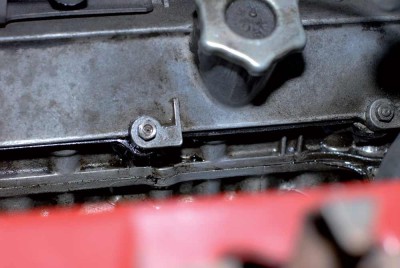
However, the loss of oil in this part usually goes unnoticed, as it is a very small amount, although over time it can "drain" all the way to the engine pan. The biggest problem with this type is code V configuration engine (V6, V8 and V12) and this is due to the tilt of the cylinder head. The seal is usually loosened at the bottom of the lid, which is located just above the exhaust branch. In contact with the exhaust branch, whose driving temperature is several hundred degrees, the oil will surely burn and produce an unpleasant odor. Replacing this seal is relatively inexpensive.
When the crankshaft seal is running out
The classic problem of oil leakage from the engine is also the failure of the oil pan seal, or the so-called engine pan or sump. Given that more or less all car manufacturers have reached a level of quality where crankcase oil is a nearly non-existent occurrence, this problem is more pronounced in older cars. However, as this sealant is exposed to constant temperature expansion, porosity and loss of oil in large quantities can occur over time. This seal is practically "operational" at all times, so oil can leave the sump continuously. In addition, the engine deck is practically the most prominent part of the engine and therefore most exposed to mechanical influences. Older cars, but also cheaper newer ones, usually do not have any trough protection, which further complicates the problem. Contact with a high curb can shift the geometry of the sump and thus lead to preconditions for oil leakage.
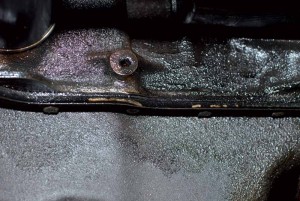
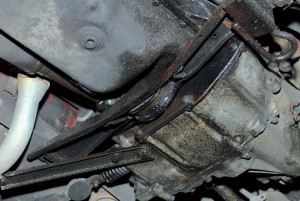
Damaged engine pan
As we said, the sump is the most prominent part of the engine and therefore most exposed to mechanical influences. It can very often be the case that when the high curbs or macadam rides are encountered, the trough is damaged so much that it cracks through which the oil will leak out in large quantities. A glance at the rearview mirror can reveal if the encounter with the stone broke through the crankcase. The oil usually stays behind the car in the form of a black trace similar to a thinner rope, and this is a sure sign that the engine must be shut down immediately. The only solution is to replace the trough, which can only be serviced. Although the trough can be welded in some cases, we still recommend a safer solution.
The engine sump can also be worn in environments where frequent winter wipes with aggressive anti-freeze. Popular industrial salt can sometimes be the culprit that the trough of your old car just can't stand it anymore. In this case, the only solution is replacement.
Sealing rings - inexpensive material, expensive "hands"
In addition to the main seals, the hood, the cylinder head and the oil pan, the engine has many gaskets that seal the moving parts of the engine, or so-called "seals". Seals that seal moving engine parts such as camshafts and crankshafts are made from a very strong mix of rubber and synthetic fibers. Their task is to prevent oil from leaking between the shaft that drives the pulley and the block or cylinder head, depending on the crankshaft or camshaft. Of course, two camshaft motors have twice as much “semering”. As we have already said, such seals are extremely complex products of superior technology.
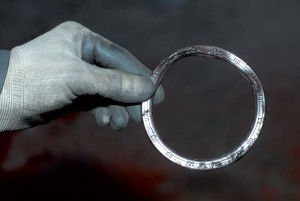
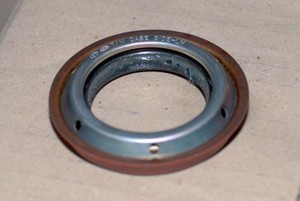
Depending on the manufacturer of the engine, these seals typically withstand more than 100.000 kilometers of life, while withstanding as much as the engine itself. Because these seals are in constant contact with the oil, their weak point is the sensitivity to temperature. Therefore, these gaskets are more problematic with more powerful gas turbo engines. Sudden changes in engine temperature, from external to operating, in just a few minutes, bring such seals to the edge of durability. The price of these seals is generally not high, moreover it is very low, but the cost of replacing these parts is up to 20 times the price of the part itself. A particular problem is that the replacement of the “sealing” requires the removal of the timing belt. Typically, the old timing belt should no longer be returned to the engine, with one being replaced by tensioners and, for some vehicles, a water pump. The problem is manifested by the fact that a greasy stain occurs at the position of the camshaft and crankshaft bearings, which is the first sign of wear. In most cases, oil leakage is not intense, at least not initially, so most drivers wait for the timing belt replacement time to replace these gaskets.
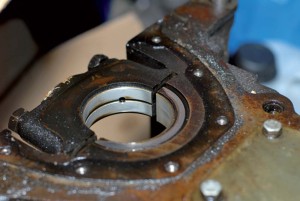
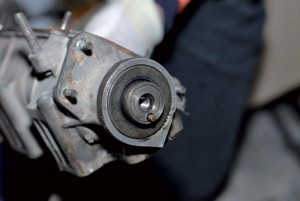
However, the bright side, in this otherwise black scenario, is that seals, as we have said, are very sophisticated and durable products, while manufacturers are also becoming more successful in solving this problem, especially with the use of new synthetic technologies.
Turbocharger problem
Of course, the problems do not stop with the camshafts and crankshaft seals. In the event that your tin is equipped with a turbocharger, dripping or leaking can also occur on this very sensitive part of the engine.
Turbochargers are becoming smaller today, and are increasingly required. This, notwithstanding the progress made in the design of the chargers themselves, but the materials used in the construction of the turbines, leads to possible problems related to the chargers. The turbocharger is practically an accessory to the engine, and we can also find several gaskets on it. The turbocharger is lubricated with oil from the same system from which the engine is lubricated. Its shaft is supplied with a hose or metal tube with a certain amount of oil sufficient to lubricate and cool it. As the turbocharger shaft frequently rotates at more than 350.000 rpm, this requires proper and smooth lubrication. However, as the turbocharger produces extremely high forces and pressure, very often the oil inlet and outlet hoses can loosen. It can then be the case that the space around the turbine becomes moist with oil, or in the worse case that the oil gets under the car as well, which is already inherent to a larger leak, but also to a bigger problem. Still, in this case one should not immediately panic. Although the turbocharger is a very expensive part, the problem can even be solved without going to a mechanic or an authorized service center. Hoses that supply and remove oil from the turbine body are usually connected by adjusting metal rings. Very often this is where the problem lies, and this is the first part that must be checked. Sometimes just replacing the adjustable metal ring will solve the problem. Also, the inlet or outlet hoses themselves can be a problem. The intestines are old, and it is very possible for them to become so porous, or even to crack at the part where the shell occurs. Even then, the replacement is possible on a do-it-yourself principle, but even if the car is taken to an authorized service center, the price of hose replacement is acceptable.
However, if the oil starts dripping or leaking between the engine gaskets and the turbine housing, this can indicate the wear of the turbine and its bearings, and in most cases the only solution is to replace or repair the turbine.
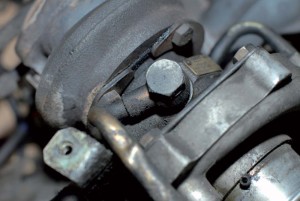
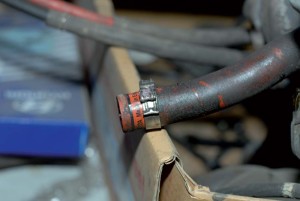
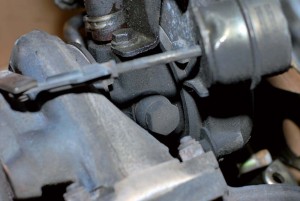
So, in the majority of cases, "marking" a territory in a car way may not be a major problem, but some attention must be paid to it. Some things each driver can check and do on their own, but for more complicated procedures, going to a repair shop is the only solution. Quality, oil level checking and timely replacement of engine oil are critical to the longevity of a car engine.
Retrieved from: proauto.ba
Recommendation of similar texts:

Hi there, I am Mladen and I am an auto enthusiast. I started this blog years ago to help like minded people share information about latest cars, car servicing ideas, used car info, exotic cars, and auto technology. You will find helpful articles and videos on a wide variety of cars - Audi, Mercedes, Toyota, Porsche, Volvo, BMW and much more. Ping us if you have anything cool to share on latest cars or on how to make older cars more efficient, or just want to say hi!

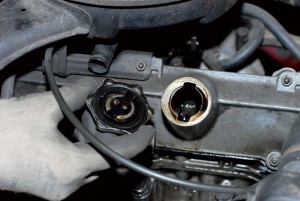
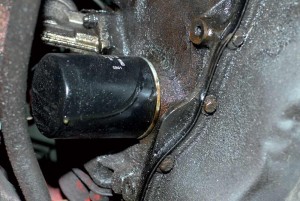
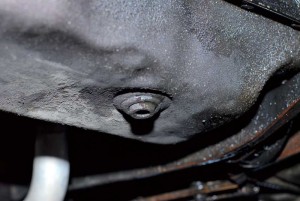
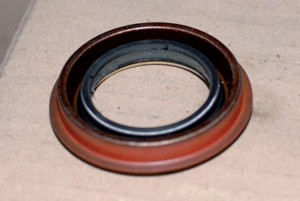
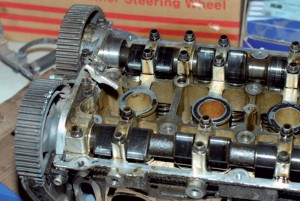
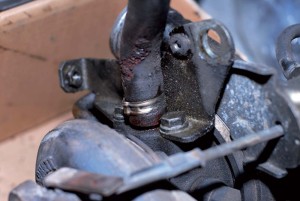
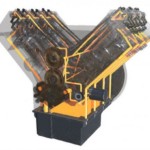



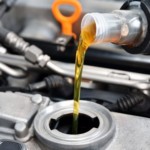
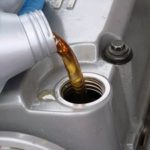
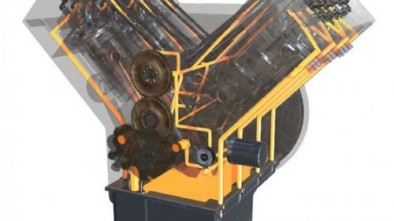

Pozz. Where to get a book for. FORD FIESTA. 2002.GOD.1.4.
50.KW.DIZEL.TDCI. BECAUSE OF THE PURCHASE, THE SELLER DID NOT GIVE ME IT. It would help me a lot. BECAUSE THE LAMP APPEARS ON THE INSTRUMENT TABLE AND I DO NOT KNOW WHAT IS IN QUESTION. IT WARNS YOU. A LOT. POZZ.